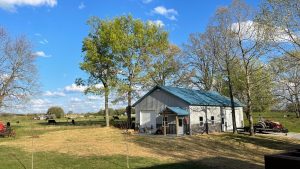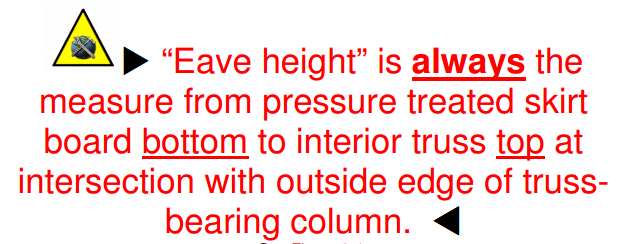Can Trees Cause Uneven Floors in My Post Frame Building?
 Tree roots can extend to soil beneath your post frame building and cause shifting leading to uneven flooring. A tree is far larger than what you can see. There is an entire extensive root system below grade, one extending for yards. Though roots are out of sight, they shouldn’t be out of mind.
Tree roots can extend to soil beneath your post frame building and cause shifting leading to uneven flooring. A tree is far larger than what you can see. There is an entire extensive root system below grade, one extending for yards. Though roots are out of sight, they shouldn’t be out of mind.
Roots naturally grow towards water and soil nutrients. Something as simple as a cracked plumbing pipe near your post frame building can cause water to seep into soil. This causes roots to gravitate accordingly.
Contrary to popular belief, these roots themselves don’t cause direct damage. Roots typically don’t have enough strength to split concrete unless there is pre-existing damage. Rather roots disrupt soil conditions. A root can consume soil’s moisture and nutrients. This leads to loose soil, less able to support your building’s weight. Soil requires moisture to retain solidity. Without it, soil becomes less compact.
Degree a tree root can inflict damage depends largely on soil conditions. Soil containing heavy concentrations of clay compacts more easily, making it harder for roots to push through it. Soil consisting primarily of gravel and loose dirt, is less compact, making it easy for roots to navigate through. Soil with heavy sand composition is also really vulnerable since sand is moisture-dependent for retaining its solidity.
If you notice uneven or sloped flooring, a foundation repair expert should perform an evaluation to determine cause. If a tree on your property is close to your post frame building, then it may very well be your culprit. If so, then this tree may need to be removed. When we say removed, we mean uprooted. It is not enough to just cut tree and leave stump behind; as this means roots also remain. If roots remain, offending tree may be able to resprout.
Even if your floor is fine, should you be concerned if you have a tree? Multiple factors are in play, such as soil condition previously mentioned. Tree species matters as well. Some species grow longer root systems than others. Examples of trees with non-invasive roots include:
· Sugar, silver, and Norway maples
· Willow trees
· Oak trees
· Ash trees
These trees have shallow roots, usually extending only four to eight-inches below ground. Don’t forget, though, distance matters as well. Trees should be planted no closer than 20 feet within your building, though even this rule isn’t ironclad. Once again, it depends on tree species. When in doubt, err on caution’s side, as this is an area you can proactively control.









